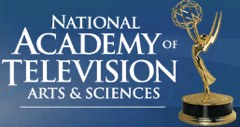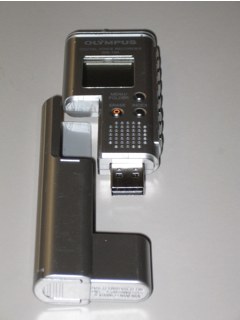 I spent yesterday morning attending the college orientation day for students and parents transfering in to the University of North Carolina in Charlotte. I was impressed by just about everything I saw. It was my first time with anything more than a cursory glance at the campus while driving down HW 49 on my way to Raleigh — and moving my daughter in and out of her dorm room for the only semester that she spent there before transferring back to Western Carolina University.
I spent yesterday morning attending the college orientation day for students and parents transfering in to the University of North Carolina in Charlotte. I was impressed by just about everything I saw. It was my first time with anything more than a cursory glance at the campus while driving down HW 49 on my way to Raleigh — and moving my daughter in and out of her dorm room for the only semester that she spent there before transferring back to Western Carolina University.
Brenda and I arrived Sunday afternoon, Martin having taken the train up the day before to stay with a friend. Brenda and I walked all over the campus, seemingly a study of its many long and steep stair ways. I suspect that she was playing me into the evenings exercise, which I’d missed because of traveling. She’s a sly fox.
Again, I was impressed by the campus, the organization of the orientation, and the apparent quality of the students (at least in appearance). The only problem that I saw was all of the goose droppings which kept you eyes on the sidewalk in front of you instead of enjoying the vast campus vista. It seems that a goodly percentage of Canadian geese have immigrated to eastern Mecklinberg County.
Since Brenda and I missed one of the presentations because there were not enough seats, we went on to another building to get front row positions for another presentation that would begin in about 45 minutes. Shortly after we arrived, and Brenda left hunting for coffee, the presenters came in to install their presentation on the class computer from their flashdrive. we started to talk about the technology in the room and she said that almost all of the classrooms on the campus were “Smart Classrooms.” Indeed, there was a presentation computer, microphone, controls, which she was struggling a bit with, and two projectors, causing the display of the Windows boot screen on two retracting screens.
I asked her then, “What makes this a smart room!”
She said, sliding her fingers caressingly over a brushed black panel at a corner of the podium, “This button right here. If I’m having a problem with the computer or something, I just press this lovely button. A voice then comes from the speakers in the ceiling asking about the problem. After I explain (to the ceiling), they tell me what to do, or they fix something from where they are, and, suddenly, it works.”
At first, this seemed like exactly the answer I should expect from a less than tech-savvy educator. However, as I thought about it, she is exactly right. What makes the room smart is not its technology. What makes is smart is what comes through the technology — from people — to people. It’s a concept that I push all the time with Web 2.0, that it isn’t the new web applications that are special. Many of them are actually quite primative from a purely technical standpoint. What’s made them special is what people have done with it.

 Craig Duplessie, whom I met during a recent trip to New Brunswick, just sent me an article about a collaboration between Bitcasters, Telefilm Canada and Canada’s National History Society to present Canadian History in a more engaging way — through a video game. They are utilizing the
Craig Duplessie, whom I met during a recent trip to New Brunswick, just sent me an article about a collaboration between Bitcasters, Telefilm Canada and Canada’s National History Society to present Canadian History in a more engaging way — through a video game. They are utilizing the  It’s an exhilarating time. The phone calls have diminished as has the e-mail. Most educators are winding down the new year. Brenda and I will attend the high school graduation of a niece this afternoon, just before dropping my son off at the Train station for orientation at UNC-Charlotte on Monday!
It’s an exhilarating time. The phone calls have diminished as has the e-mail. Most educators are winding down the new year. Brenda and I will attend the high school graduation of a niece this afternoon, just before dropping my son off at the Train station for orientation at UNC-Charlotte on Monday! Yesterday, Samsung Electronics Group Chairman, Lee Kun-hee had some things to say about education after the Hoam Awards for excellence in the arts, service, and science and technology. Increasingly feeling the economic threat of being “sandwiched” between Japan and China, he said to reporters,
Yesterday, Samsung Electronics Group Chairman, Lee Kun-hee had some things to say about education after the Hoam Awards for excellence in the arts, service, and science and technology. Increasingly feeling the economic threat of being “sandwiched” between Japan and China, he said to reporters, Remember the Pepsi spewing in the air, spinning fountains of sugar sweetness? Was it Emmy material?
Remember the Pepsi spewing in the air, spinning fountains of sugar sweetness? Was it Emmy material? But back to the podcasting, I have always tried to focus down on using information technologies for learning that are accessible for schools that are willing to invest just something into it, and consistently say in my presentations and workshop that you don’t have to go buy an iPod to record a podcast.
But back to the podcasting, I have always tried to focus down on using information technologies for learning that are accessible for schools that are willing to invest just something into it, and consistently say in my presentations and workshop that you don’t have to go buy an iPod to record a podcast.  I especially like the built-in USB plug. You just plug the device directly into your computer, and it shows up as an external hard drive. Just audio drag the files off into your podcast directory, and get to work. One glitch is that the files are saved in WMA format, so you have to find a converter to change it to a wav or mp3. I used
I especially like the built-in USB plug. You just plug the device directly into your computer, and it shows up as an external hard drive. Just audio drag the files off into your podcast directory, and get to work. One glitch is that the files are saved in WMA format, so you have to find a converter to change it to a wav or mp3. I used